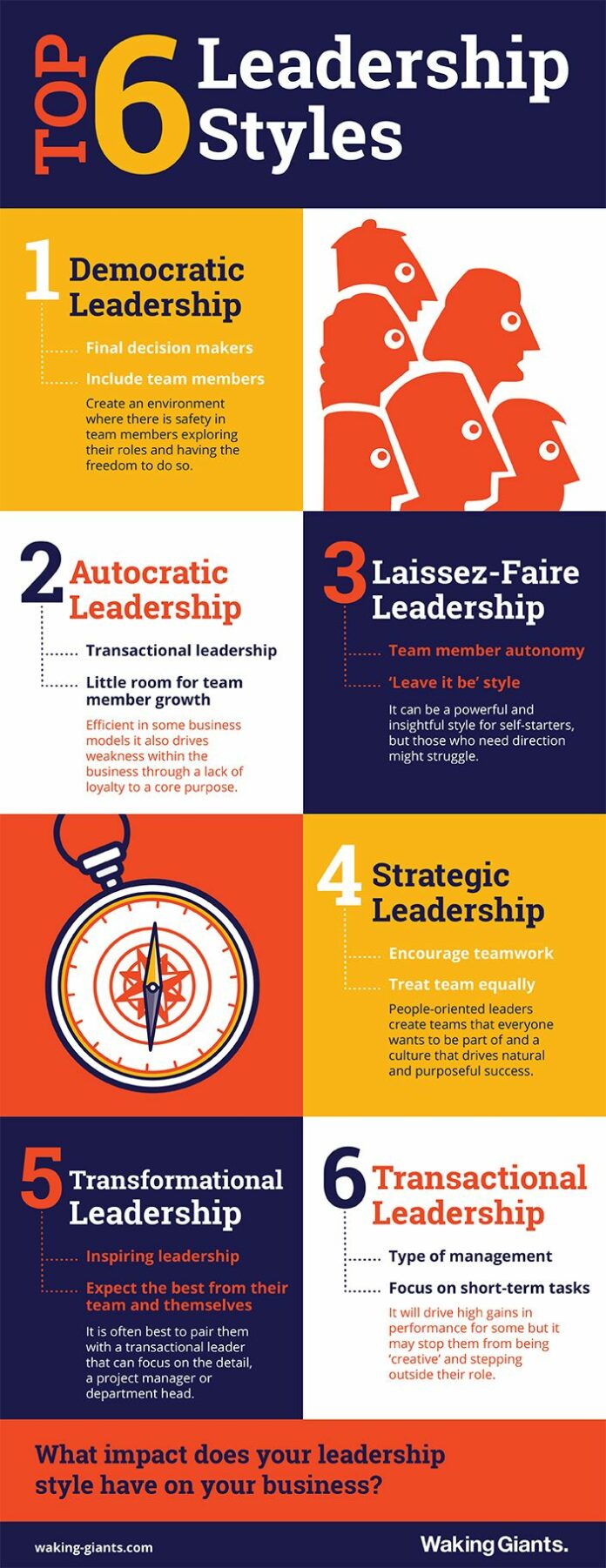Leadership styles choosing the right approach for the situation
Imagine that you work with a positive, charismatic leader. She’s excited about the future of the organization, and she shares this excitement with her team. She makes sure that people understand how their efforts contribute to this future, and this inclusion sparks loyalty and intense effort in the team. Generally, morale and job satisfaction are high, because team members feel that they’re making a difference.
However, some people in her team don’t respond well to this style of leadership. And when there’s a crisis, she struggles to get some of them to focus on short-term objectives. She could be more effective by varying her approach to leadership, depending on the situation; and she could do this by using “six emotional leadership styles,” each of which is useful in different circumstances.
In this article, we’ll look at these six emotional leadership styles. We’ll explore each style, and we’ll look at the situations where each is most useful. We’ll also explore how you can develop the skills needed to use each style effectively.
The Six Emotional Leadership Styles
Daniel Goleman, Richard Boyatzis, and Annie McKee described six distinct emotional leadership styles in their 2002 book, “Primal Leadership.” Each of these styles has a different effect on people’s emotions, and each has strengths and weaknesses in different situations.
Four of these styles (Authoritative, Coaching, Affiliative, and Democratic) promote harmony and positive outcomes, while two styles (Coercive and Pace-setting) can create tension, and should only be used in specific situations. Goleman and his co-authors say that no one style should be used all of the time. Instead, the six styles should be used interchangeably, depending on the specific needs of the situation and the people that you’re dealing with.
Note:
You’ll be able to choose the best style to use if you know how to “read” others and the situation you’re in. This is where it’s useful to improve your listening skills, learn how to understand body language, and improve your emotional intelligence.
We’ll now examine each style in more detail.
1- The Authoritative (Visionary) Leader
People using the Authoritative leadership style are inspiring, and they move people toward a common goal. Authoritative leaders tell their teams where they’re all going, but not how they’re going to get there – they leave it up to team members to find their way to the common goal. Empathy is the most important aspect of Authoritative leadership.
2- The Coaching Leader
The Coaching leadership style connects people’s personal goals with the organization’s goals. A leader using this style is empathic and encouraging and focuses on developing others for future success. This style centers on having in-depth conversations with employees that may have little to do with current work, instead focusing on long-term life goals and how these connect with the organization’s mission. This style has a positive impact on your people, because it’s motivating, and it establishes rapport and trust.
3- The Affiliative Leader
The Affiliative leadership style promotes harmony within the team. This style connects people together, encouraging inclusion and resolving conflict. To use this style, you must value the emotions of others, and put a high value on their emotional needs.
4- The Democratic Leader
The Democratic leadership style focuses on collaboration. Leaders using this leadership style actively seek input from their teams, and they rely more on listening than directing.
5- The Pacesetting Leader
The Pacesetting leadership style focuses on performance and meeting goals. Leaders using this leadership style expect excellence from their teams, and often the leader will jump in him or herself to make sure that goals are met. The Pacesetting style doesn’t coddle poor performers – everyone is held to a high standard. While this can be a successful style, it can have a negative effect on the team, leading to burnout, exhaustion and high staff turnover.
6- The Coercive (Commanding) Leader
Coercive leaders use an autocratic approach to leadership. This style often depends on orders, the (often unspoken) threat of punishment, and tight control. People in modern, democratic countries are used to having a level of control over their lives and their work, and this approach deprives them of this. What’s more, because this leadership style is so often misused, it can have a profoundly negative effect on a team.


